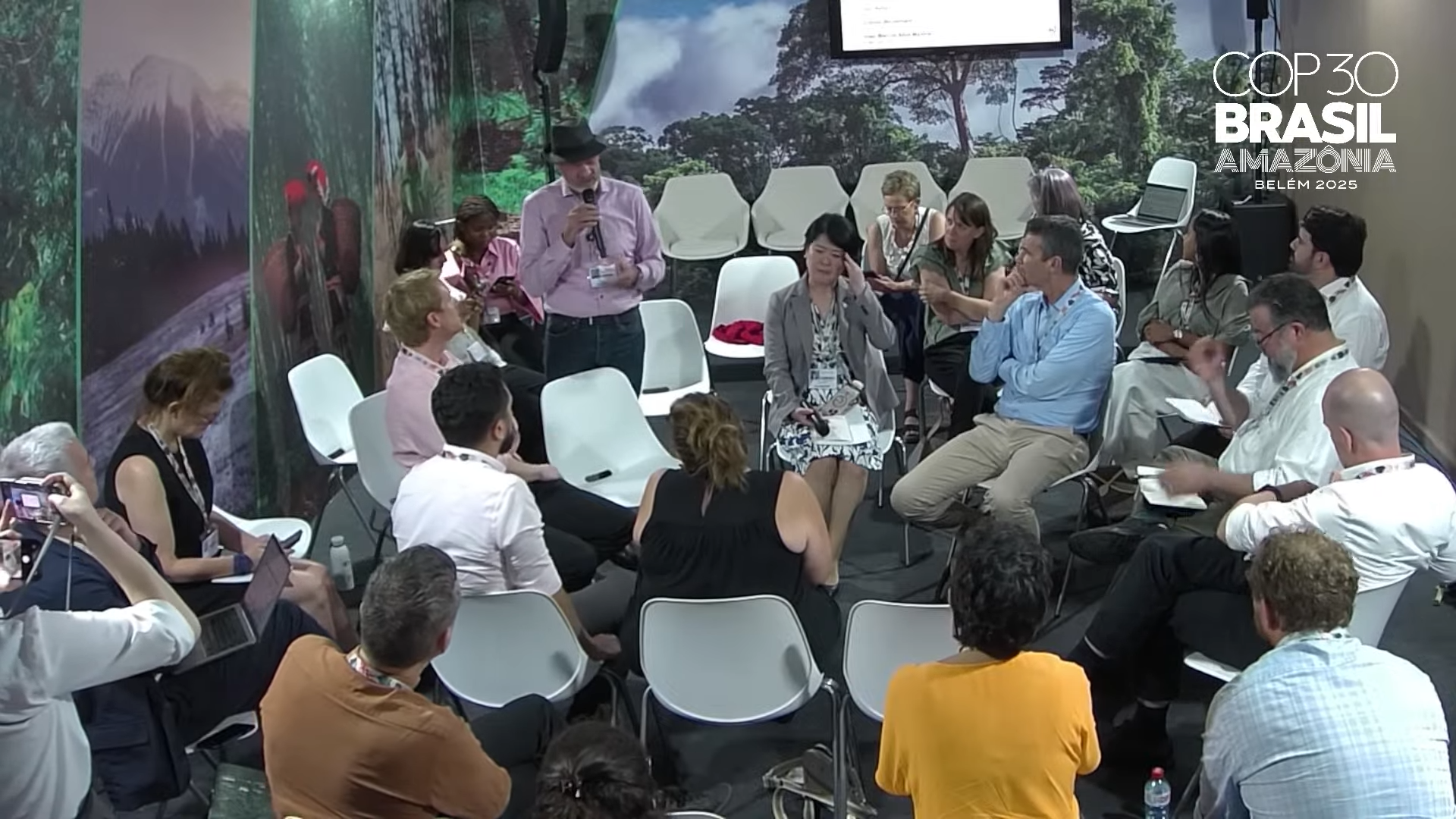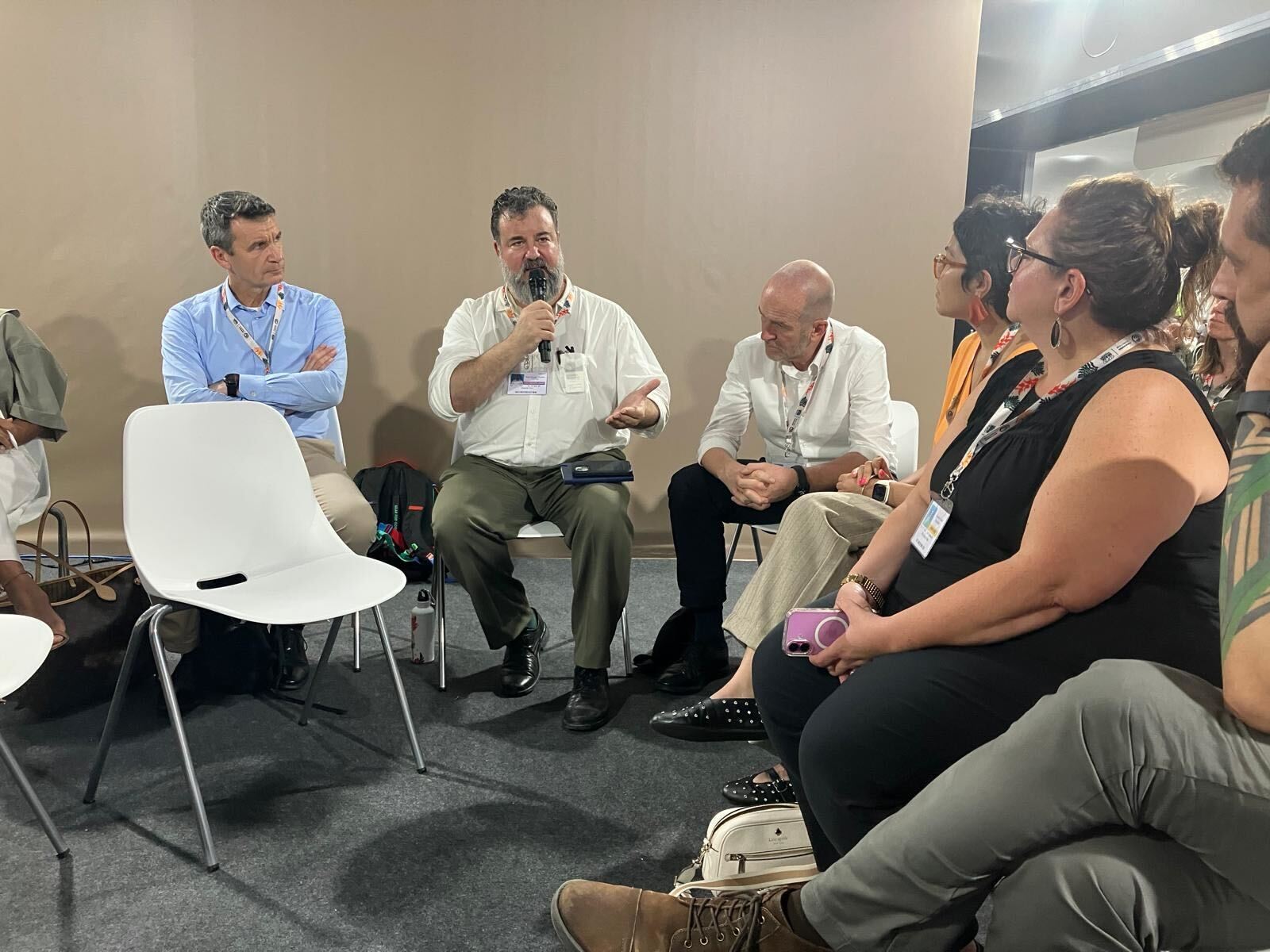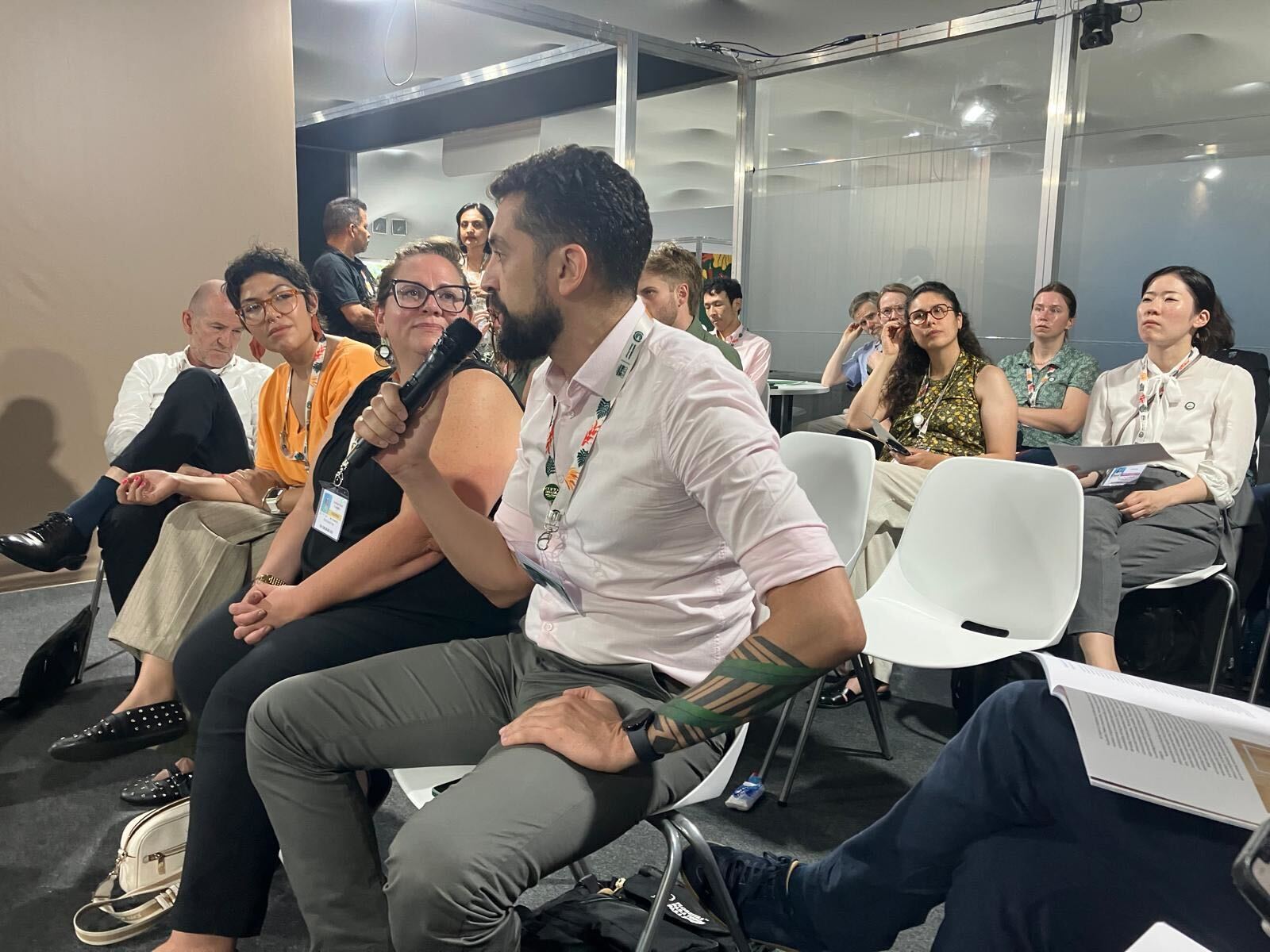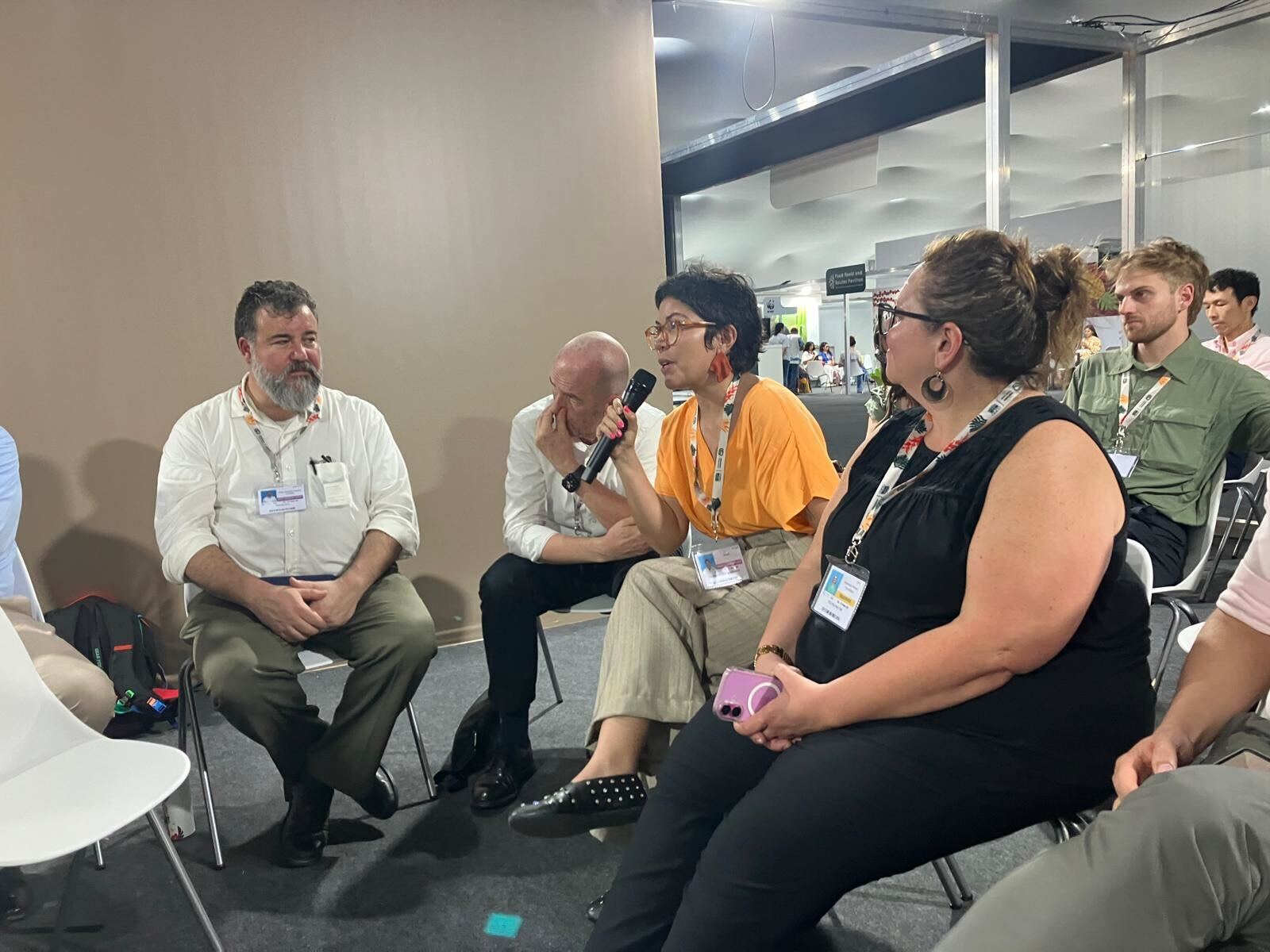From Process to Outcomes: The Next Chapter for Forest Certification
At a packed fishbowl discussion in the COP30 Forest Pavilion, speakers from across policy, practice, labour and markets explored how forest certification must evolve as expectations shift from proving practices to demonstrating outcomes.
From Process to Outcomes: The Next Chapter for Forest Certification
20 November 2025 Event report
At a packed fishbowl discussion in the COP30 Forest Pavilion, speakers from across policy, practice, labour and markets explored a single question that shaped the entire session: how must forest certification evolve as expectations shift from proving practices to demonstrating outcomes?
Opening the event, Thorsten Arndt, Head of Advocacy at PEFC International, set the tone with an image that stayed with the room. Certification, he said, has long resembled a whale shark that is vast, graceful, slow moving, and moving with purpose, a creature that translates complexity into trust.
But stability is no longer enough. Surrounded by new expectations from climate and biodiversity frameworks, certification needs to become more like a batfish: agile, responsive, and connected to a wider group of stakeholders. The challenge, he stressed, is to change rapidly and remain credible.

What certification has delivered

Participants began by grounding the debate in what certification already contributes. Labour representatives pointed to visible differences on the ground.
Carolina Dantas of the Building and Wood Workers International described forest concessions in the Amazon where managed native forests act as a barrier against illegal activities, contrasting sharply with neighbouring degraded areas.
She noted that certified operations often provide formal jobs and, in some cases, unionised employment which are improvements that remain far from universal in the region.
Others highlighted decades of progress in forest management. One speaker referenced advances in modelling, silviculture and risk assessment, arguing that certification could help scale these tools by giving investors the confidence to direct resources into sustainable management.
Elson Fernandes, representing FSC Brazil, added that certification has changed how managers operate, particularly through traceability and accountability.
On the demand side, trust emerged as a foundational achievement. Paul King of Built by Nature recalled how credible certification ended an era of unverifiable sustainability claims in timber markets and created the conditions for climate positive wood construction to expand.
Why expectations have changed

Across the circle, participants agreed that the operating environment has shifted. Climate mitigation now requires proof of measurable outcomes such as carbon storage, resilience and habitat quality, not simply adherence to good practice.
Market buyers and investors increasingly expect evidence that harvesting can create a net positive effect rather than simply avoid harm. Several voices stressed that social inclusion, including labour rights, community participation and gender equity, is now central to what stakeholders consider sustainable.
Rita Hite from the American Forest Foundation noted that family forest owners share strong values around wildlife and biodiversity and want to contribute more to climate and nature objectives.
She highlighted that participation often depends on practical support for smaller ownerships and pointed to certification as an important validator of good management practices.
Global South realities added urgency. Participants noted that most of the world’s forests remain uncertified and that in regions with high shares of illegal timber, certification must become more accessible, more relevant and better linked to tangible benefits. Several speakers warned that overly burdensome requirements could push producers away rather than bring them in.
How certification needs to evolve

Throughout the session, speakers pointed to pathways for change. Many called for more agile and faster standard cycles so certification can keep pace with policy and market demands.
Others argued for greater outcome orientation, meaning evidence that certified areas deliver fewer accidents, better ecological conditions or stronger community benefits.
Participants urged certification systems to connect more clearly with value adding markets such as carbon or biodiversity mechanisms.
Another recurring message was the need for stronger collaboration between certification systems. A closer cooperation would help the sector communicate a clearer and more unified message. Several participants saw potential in shared principles, pre-competitive alignment and common approaches to data.
Closing reflections
As the session drew to a close, Thorsten noted that the discussion offered "ample ammunition" for the PEFC’s system revision process.
The challenge ahead, he suggested, is to build on certification’s established trust while reshaping it to meet rising expectations for climate, biodiversity and social outcomes.
If the whale shark symbolised certification’s first three decades, the batfish may yet define its future: still recognisable, still trusted, but agile enough to swim with a rapidly changing set of expectations.
Panelists of the inner fishbowl included Herrick Fox, Berkley University; Rita Hite, President and CEO, American Forest Foundation (AFF); Carolina Dantas, Forestry and Climate Officer, Building and Wood Workers´ International (BWI); Elson Fernandes, Executive Director, FSC Brazil; Yuuko Iizuka, Executive Officer, Deputy Head of Corporate Division, Sumitomo Forestry, Paul King, CEO, Built by Nature, Joshua Wickerham, Senior Advisor, Outreach and Engagement, ISEAL; Joao Marcos Silva Martins, International Trade Center.